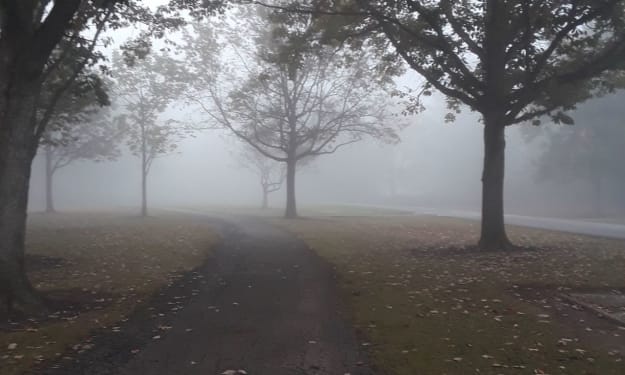
So, I've loved dogs for my entire life! I mean, I am obsessed. There will never be a time that I don't love dogs, or a time when dogs aren't welcome with me. I grew up with dogs. I grew up watching dog shows and agility competitions. I've had a Labrador, an Irish Setter, a German Shepherd, a Pomeranian, a Gordon Setter and now a Whippet. I've loved them all dearly and learned the idiosyncrasies of each breed and many more.
In 2009, I became a professional dog groomer. It sounds fun, and it can be, but it's seriously hard work. There is so much that they don't tell you before you get into the industry, so much you have to find out for yourself even after you've been thoroughly trained. There are health issues, injuries and heart-breaks that you just don't hear about as an outsider. But there are tricks of the trade that every groomer really wishes the layman knew. So I'm going to share a few of those with you now.
Appropriate brushes and combs: This absolutely depends on your dogs coat and, depending on your breed, you may need multiple types. Tip 1 - Don't use human brushes, they don't help. The basic brushes you'll want if you want to be able to brush out any coat are the slicker brush, the rubber curry brush and a boar's bristle brush. You'll also need a comb with a fine and wide toothed side, an undercoat rake and potentially a chamois cloth. Yes, there are other items groomers use, like a mat breaker, but those can be dangerous if you don't know how to use it properly so I'm going to tell you how to avoid needing one: Brush your long haired or curly haired dog daily and thoroughly. It really is the best way to avoid a myriad of problems. Tip 2 - Don't get angry when a groomer has to shave your matted dog... after all, mats are your fault because you didn't brush and comb your dog.
So which breed needs which brush?
Short haired dogs (Whippets, Greyhounds, Pit Bulls, Beagles, etc.) need a rubber curry brush. If you want to keep their coat really super shiny you can also use a boar's bristle brush and a chamois on them.
Dogs with long, heavy/dense coats (Huskies, Malamutes, some Golden Retrievers, etc.) need a soft slicker brush, a double sided comb and an undercoat rake.
Dogs with long coats that aren't super thick (Setters, Afghans, etc.) need a soft slicker and a comb.
Curly coated breeds (Poodles, Portuguese Water Dogs, Irish Water Spaniels, Cockapoos, Doodles, etc.) Need a firm slicker brush, a soft slicker brush and a good double sided comb.
Wire Coated breeds (Wire-haired Dachshunds, German Wire Haired Pointer, Brussels Griffons and a lot of terriers, etc.) Need a soft slicker and a double sided comb.
Speaking of wire coated breeds, there's another trick you may not often hear of. If you like the course, wiry texture of the coat and want to keep it that way never shave them! Find a groomer who can do what is called hand stripping. Hand stripping keeps the coat healthy and in pattern, is better for the dogs skin and a lot of dogs prefer it to being shaved. It is a costly and time consuming process, though, and not many commercial groomers have been trained to do this.
So what about the other coat times? To Shave? Or not to shave? If you're not sure, don't do it. Honestly, most breeds should not be shaved. A lot of the curly coated breeds can tolerate being shaved and won't suffer any damage to their coat. In fact, most of the curly breeds should be shaved regularly to maintain ease of grooming and the dogs comfort... not to mention they look super spiffy in certain styles. That said, find a groomer you really trust and like and go with what they suggest. Most groomers love trying out new styles on these breeds and you can have a lot of fun with it.
Terriers and Setters are another group that usually get a shave, though a hand strip is better, as I said before. When done properly, these dogs look lovely in a breed clip and their coats generally bounce back very nicely.
Short haired dogs and heavy coated dogs should not be shaved. Ever. Seriously. When brushed properly, the shedding is minimal and with the double coated breeds the coat acts as a form of air conditioner in the summer and a cozy coat in the winter. Shaving these breeds does worlds of damage to the coat. Shaping the coat with shears and shaving out the sanitary area is really the most "hair cut" a heavy coated dog should get. I'm not joking. Shaving doesn't reduce shedding, it makes the shed pieces smaller and sharper... oh the horrors of hair splinters.
Great... so what about bath time? Tip 1 - Don't use human shampoo. Seeing a pattern? Yep. Our Ph is different from a dogs and our shampoo can strip the oils from their hair and skin causing oh so much dryness. Can you say itchy? Ask a groomer you trust for shampoo recommendations, or their vet if they have more serious issues. There are a lot of great dog shampoo brands out there now and you can definitely find one that works for you and Sir Snugglewumpus. Tip 2 - Use puppy shampoos on puppies. Tip 3 - Use tearless face shampoos on faces. Kind of obvious, right? Yeah... soap hurts when it gets in their eyes, too.
Conditioners are great but mostly unnecessary. Deodorizing treatments, however, are a godsend. If your pooch gets skunked don't bother with those home treatments that will just stain or damage their coat and do nothing for the stink. There are a few de-skunking treatments for sale and most of them are great. My favorite is Nature's Miracle. Follow the instructions exactly and be VERY careful around the eyes and nose... yes, I know, pupperoni got a face full of skunk oil but the eyes are still very sensitive.
Speaking of eyes... Always use a sterile eye flush after washing their faces, even at regular bath time and even if you don't think you got soap in their eyes. For that ugly reddish brown stain some white dogs get, the best thing is - Tums! You read that correctly. Tums. The antacid. Dosing guides are available online and depend on your dogs size.
And what about those ears? Make sure you give them a sniff now and then. If you notice any odor, you have an issue. Bready smells are yeast infections. Musky scents can be a bacterial infection. Got coffee ground like stuff down there? Ear mites. All things to get checked at your vet but also things that regular ear cleaning can help prevent. Use the premoistened wipes you find in the store or a cotton ball or cotton round with either ear cleaner or witch hazel on them to gently wipe out the ear. Don't try getting deep in there, you'll only hurt your pooch.
What about dental hygiene, you ask? Yes, it really is important. If your dog will allow you to, brushing daily is great. If they're a big chewer, they may not need it but it wouldn't hurt. There are oral sprays and water additives too but check with your vet first. Just brushing the teeth every three months at their grooming visit is just a waste of money. Keep an eye on their teeth and gums. If you notice discoloration, tartar or chips, go see your vet. The gums should be a healthy, soft pink. If they're super red or really pale, see your vet. If they're every white, go to an emergency vet ASAP.
Finally, let's talk nails and paw pads. I am a HUGE fan of nail grinding. It gets the nails as short as possible and rounds them off so there are no sharp edges. There's no risk of quicking your pooch which is painful and bloody. Quicking is when you cut the nail too short and cut into the blood vessels that run down through the center of the nail. It hurts. It really hurts. It also bleeds like crazy. That said, not all dogs will let you grind their nails and you should never use those grinders with guards on them, they can trap the nail and 'cause pain and panic... for both of you.
Paw pads don't require a lot of care, just keep them clean and rinse your dogs paws if they walk through ice melt or anything potentially irritating. They do make waxes and creams to soften and protect paw pads but you don't usually need them.
And that's basically it. I know someone out there is wondering about anal glands... I'd love to ignore that question. Really, I would. It's awful. It's also unnecessary unless the dog has problems clearing their glands themselves and that's really an issue for your vet. You'll know if your pooch has anal gland problems... they scoot. Though they scoot if they have worms, too. I did say to see your vet, right? Make sure your dog is eating right and having healthy bowel movements and you generally won't need to worry about the whole anal gland thing...
Let's never speak of that again, ok?
Happy trails and good luck on your dog grooming adventures!
About the Creator
Jennifer Gross
I'm a writer and painter, a traveler and pet lover.
I enjoy cooking and baking.
My taste in music is eclectic and I genuinely like a little of everything.
I'm a Gemini and there's a lot more to learn about me if you're interested.






Comments
There are no comments for this story
Be the first to respond and start the conversation.